This contribution is by way of Ken Clark, who together with a band of like minded people back in the 1970’s completed all sorts of fantastic projects. I hope to bring you more of his other projects later, as it all reads like a bit out of ‘Boys Own’ Ken will forgive me for saying that the photos are not very good as they are early repros on a printer. When I get the originals I will put them up.I have changed nothing in Ken’s narrative, and only added a couple of pics.
Of the many exciting dives carried out by the group along the South Coast in the 70’s, the clearance dives on Submarine XE8 were to prove the most hazardous. Poor weather conditions encountered during the winter of 1972/3 meant that even sport diving was very dangerous. Therefore, carrying out the hard work of clearing rusting steel cables and tangled ropes from any wreck could be considered as being very dangerous indeed! In hindsight, the work load we set ourselves during the depths of that winter must have appeared to border on madness. A series of strict time schedules and safety procedures had been imposed by the Admiralty as a pre-requisite before any amateur work could be undertaken on wrecks for which they had any responsibility – and particularly a sunken Navy sub! However, we had previously demonstrated from our past record that we were a capable and responsible group.

To prove our point, Peter and the group had made a commitment to complete a scheduled workload to clear the sub of debris, whatever conditions were encountered. We’d all dived together off Portland Bill during the past years, and most of us had gained some experience diving among many of the wrecks lying off the ‘Bill’. Diving in the vicious tidal race required considerable care in all but the most calm conditions, but when the tide was running, only the foolhardy ventured within it’s influence. Lying out there in some 30 metres of murky water, was the Miniature Submarine XE8, a derivative of the WW2 – X craft, famous for the attack on the Pocket Battleship Tirpitz when it was anchored in a Norwegian Fiord. This particular version, now lying on the seabed off Portland, was an adaptation built for service in the far east and given the suffix XE. The XE8 was now lying on the sea bottom, directly in the path of the notorious race, located at Latitude 50 degrees 33 minutes 01 seconds N. – Longitude 02 degrees 21 minutes 06 seconds W. From my dive notes and I imagine as a point of interest, I note that the original Officers were Commanders ‘Johnny Ruse’, a Canadian Reserve Lieutenant and Sub Lieutenant J. Benson RNVR. The former Lt.Ruse is now Lieutenant Commander J.C. Ruse RCNVR. At our briefing sessions, I was led to believe that the submarine had been used as a practice sonar target for some years and was now deemed to be ‘excess to requirements’ by the Navy. . . . . Not to the Imperial War Museum of course and certainly not to our little group!
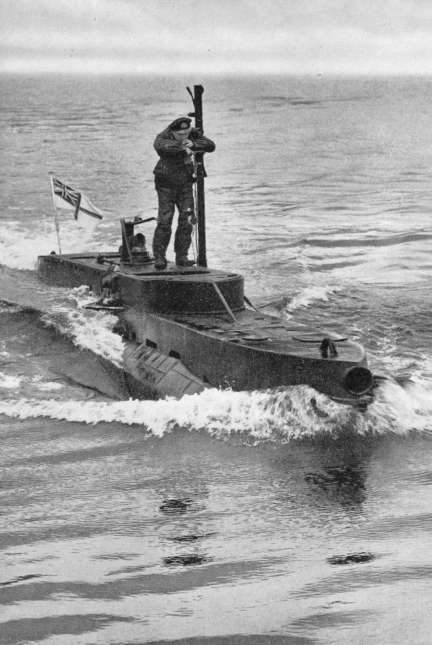
Teams of divers arrived at the neighbouring seaside resort of Weymouth to carry out work on most week- ends throughout the year, but many of the dives were often aborted before the hired boats could reach the location, and disappointed divers were forced to return to base time and time again. They were, amazingly, ‘encouraged’ to pay their boat hire fees, whether the skipper had managed to get out of the bay or not! Thus, driving down to Weymouth to work on the Submarine often became a very expensive pastime! Only a small percentage of the planned dives ever actually came to fruition because of atrocious conditions, and it became a work of art for Peter to encourage people to make the long, tiring journeys to Weymouth when in their hearts, they new that poor weather forecasts precluded any diving otfPortland. Nevertheless, a few hardy, perhaps foolhardy divers turned up at the site on so many weekends that a small percentage of successful dives were inevitable.
![The Captain ofHMS Kinbrace [left] standing next to the aide of the C in C Portsmouth and the Conunander in Chell [third from left] discussing the lift of HM Submarine XE8. The Captain ofHMS Kinbrace [left] standing next to the aide of the C in C Portsmouth and the Conunander in Chell [third from left] discussing the lift of HM Submarine XE8.](https://www.submerged.co.uk/wp-content/gfx/x/xcraft%201%20big.jpg)
I usually managed to cajole and persuade a few of my own Polytechnic divers to join me on these weekends throughout the winter, convincing them that even if the dives were aborted, the marvellous hospitality of Brian and Sally King at the Weymouth dive shop, would more than compensate them for the lack of diving. Most of us stayed at Brian and Sally’s dive shop for our B& B, particularly those whom Sally could trust to behave themselves by not messing up her bathroom – and there were one or two diving comedians who were definitely unwelcome! We could leave aJl our diving equipment there in safety, fill our tanks, buy spares and generally keep ourselves up to date with whatever was going on in the area. There was a large, comfortable ‘rest room’ above the dive shop where we all relaxed -post diving, and we could drink, eat Sally’s sandwiches and tell outrageous diving stories into the early hours of the night. It didn’t always feel like we’d enjoyed ourselves though when we were 8 or 9 kilometres off the coast, anchored over the submarine the next morning, but it was a hell of a hardening up process for those of us who stuck it out throughout that winter.
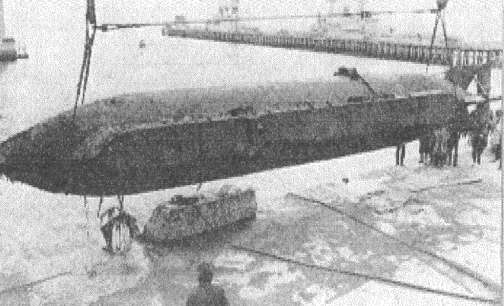
One of the first priorities – before anything else could be achieved, was to position a buoy over the wreck for identification and for the divers to use for descent and ascent. Peter and the Hampstead lads had arranged for a large buoy to be allocated to them by the Navy at ‘Priddy’s Hard’ in Portland NavaJ Base. This particular weekend, the buoy, which was about the size of a small car, was to be taken out to the site. A heavy steel cable was attached from the submarine to the buoy and it was left in position as a warning to shipping. The fickle British weather was to provide us all with a few unwelcome shocks that winter and after the first of many, Peter rang me to inform me that the buoy had been ripped away from it’s anchor point on the subma- rine by the tremendous current sweeping around the Portland Bill peninsula! Other wreck buoys, put on the submarine over diving weekends, suffered the same fate after violent storms came barrelling through the area. Some were recovered, but one or two were never to be seen again! In between the storms, the cold, grinding work of getting divers down to the wreck went on.

Most dives were hard work and very expensive, but I do remember one particularly pleasant and rather memorable occasion just before Christmas when the weather so was beautiful when we arrived at the dive site, out in to the English Channel, that we took off our clothes and laid out on deck to sunbathe in our birthday suits! The temperature was at least 20c on board so we enjoyed this rare opportunity of being able to top up our summer tan. Those moments were rare though and mostly it was seasickness pills and hypothermia that was the order of the day. I actually took my son out in rather rough weather for his first dive on the sub one day and before we’d left the relative shelter and calm of Weymouth bay he was imploring me to call out the Lifeboat to take him back to shore! I felt so sorry for him, but he stuck it out in good fashion. It was quite rough on that occasion and many of the divers were not actually very disappointed to have the dive terminated by the skipper of the boat before reaching the wrecks site. We did however, take the opportunity of making a dive in the bay to collect some Scallops for our freezers back home. I personally collected a mail sack full, and most of the other lads ended up with smiles on their faces, so the weekend couldn’t be regarded as a total waste of time! I should, just for the record, report that my son declined all future offers I made for him to dive on the sub!
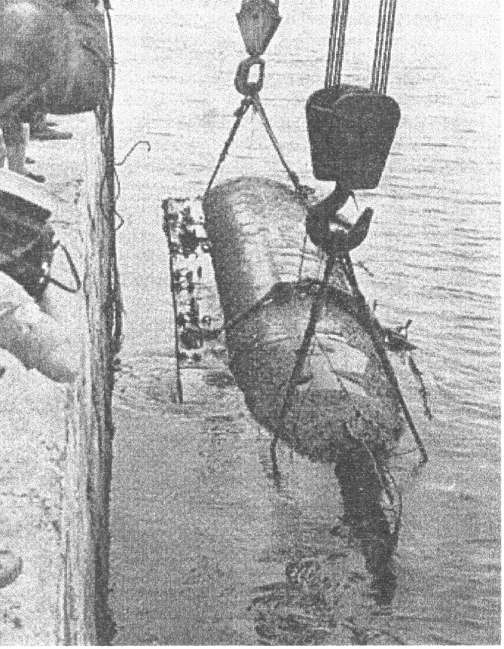
One other noteworthy occasion I remember, was when we were clearing cables and debris from the submarine, I dived on that occasion with Rtd. Royal Navy Commander Alan Bax, Director of the famous Bovisand Diving Establishment just east of Plymouth, a channing, well known and popular diving personality within the diving world. Our task on this occasion was to fix underwater blasting gelatine to some particularly heavy old steel cables and simply blow them off and away from the side of the sub. I had of course previously attended one of the Bovisand Explosive Courses for divers, but I appreciated the fact that Alan, with years of experience, was going down to actually layout the pattern of explosive charges and I was actually quite re- lieved at not being tested by the professor himselft We both pulled ourselves down the line to the submarine with some difficulty, looking like a pair of flags attached to poles in the strong current. We just needed to have a good look at the situation before Alan selected what he considered to be his ideal position and began the work of fixing a small charge of the plastic to a length of cable.
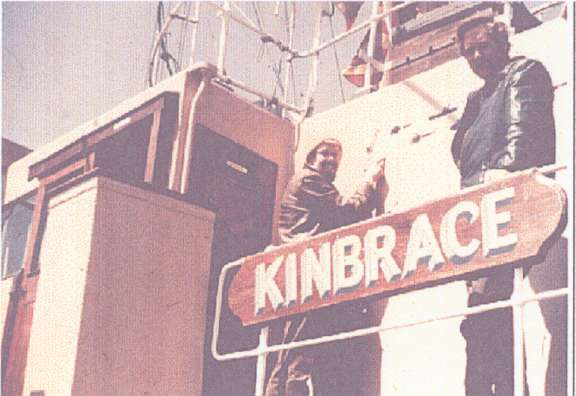
He finally ‘signed’ to me to get the detonator, previously left on board and I rapidly went up the role-line to the side of the boat, where I was handed the detonator by the lads in the fishing boat. I immediately dived again to where I’d left Alan working, handing him the detonator to be inserted in the charge. We worked our way around the submarine, checking for any other fouled cables as we went, and having completed the job, swam completely around the periphery once again just to check that no other rubbish was fouling our work and then the pair of us headed for the surface as quickly as we could! The boat was then moved away to a safe distance before Alan rechecked his own connections and blew the hell out of the rubbish below with a resounding crack, which brought more than a little froth to the sur- face! We weren’t looking for fish on this particular occasion as we usually did. Our normal system was to blow the job – wait for the fish- then collect the ‘fruits of the ocean’ floating on the surface – dead codlings or pouting for the freezer by the sack load! Half and hour later, depending upon the current of course, we could usually go down again to find that the clouds of mud and rubbish had cleared and we could continue with whatever work we’d set ourselves.

In this case, the previously fouled area around the submarine had cleared itself squeaky clean as a result of Alan’s’ deployment of the explosives, and the series of shackles were then expertly at- tached by the rest of the divers. The XE8 was ready for the final lift now, and we all logged the dive down as a compete success. Some time later, it was with some disappointment, if not shock, that I. later learned from Peter Cornish that although the Naval Authorities had checked out our work and deemed it to be a first class job, they were however, not ready to leave the dangerous job of bringing 45,OOOkgs of miniature submarine to the surface in the Portland Race, deeming it to present too much of a hazard to shipping in the area, even if the job was being tackled by a group with a proven pedigree. Peter expressed his shock and unhappiness at the decision, but the situation was softened a little when the Naval authorities asked if we would both like to join the clearance divers onboard the salvage vessel Kinbrace as the they actually hooked their lifting gear up to our shackles and brought the sub to the surface. We were suitably impressed at the unique gesture and very pleased to accept this kind offer by the Naval Authorities.
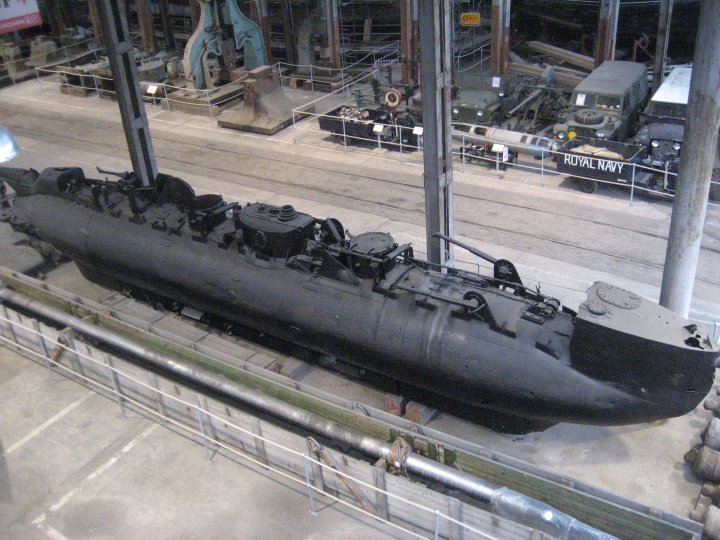
We both arrived in Portland in Peters car at the appropriate time to join the C & C Portsmouth area and the Cap- tain of Kin brace on board the salvage vessel. We steamed out of Portland that morning and continued out to sea and the wreck buoy. Kinbrace soon anchored up and the dozens of enormous cables lying out along the forward deck were run out through the lifting blocks and over the ‘horns’ at the bows of the vessel. Divers went over to attach the cables, and soon afterwards the winches began to take up the slack as the ship slowly took the weight of the submarine.It was about this time that out of the corner of my eye, I noticed what I recognised as a ‘tribal’ class Frigate coming out of one of the openings of Portland Harbour and heading in our direction. As I watched, fascinated at the spectacle of the warship coming out so cleanly through the narrow gap, a bow wave quickly began to show itself in front of the Frigate as it’s speed increased. The approaching warships presence hadn’t gone unnoticed by the skipper of Kinbrace either, for within a few seconds all hell let loose on board.
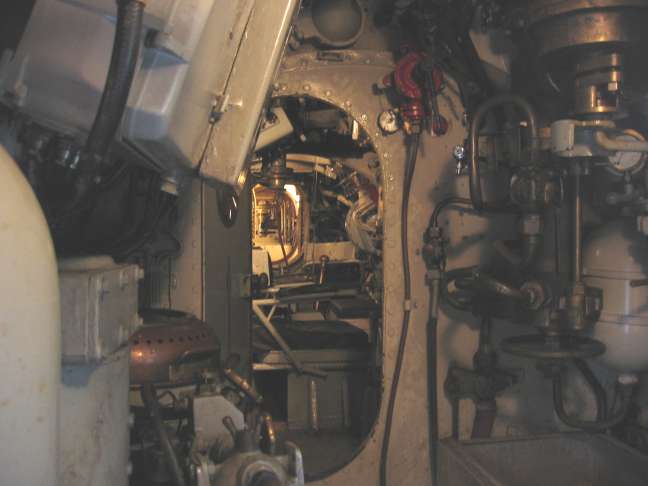
Peter and I stood as quietly and unobtrusively as possible, squashing our- selves again a bulkhead, as the ships crew went in to action. The signaller was thrashing away on a signalling lamp pointed at the approaching warship, by now just a few miles distant, while a series of various signal flags were run up.The skipper stopped beside us as he moved past,to briefly explain to us that if the Frigate, identified as ‘Ashanti’ had continued on it’scourse, the wave set up by the warship which was certainly travelling at some 30 knots, would have hit us within a short time and sent the 45,000kgm lump hanging beneath Kinbrace plummeting to the bottom! The skipper of Her Majesty’s warship Ashanti, must have been suitably impressed by one or two Anglo Saxon terms offered by the Skipper of Kinbrace. Either that, or he’d learned that the C in C Portsmouth was on board the salvage vessel he’d been heading for at speed. Whatever had influenced him had been rather effective, for soon afterwards the bow wave visibly decreased to a gentle wavelet as the Frigate slowed almost to a walking pace, leaving us all breathing a sigh of relief.
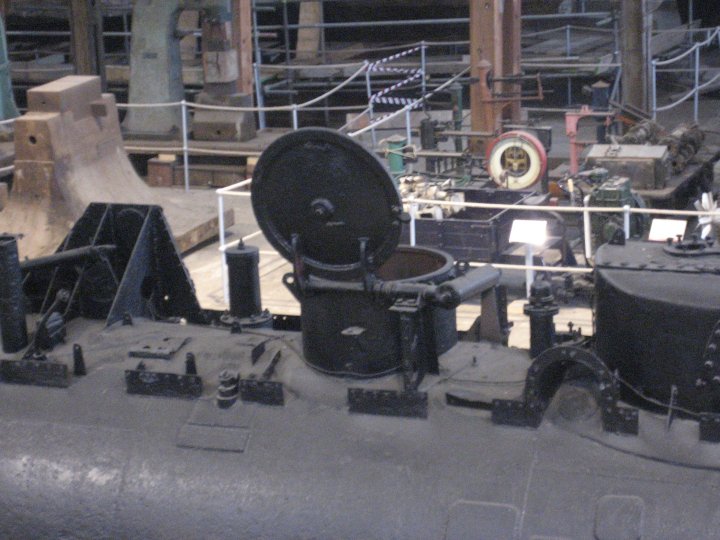
The rest of the operation to raise the submarine went according to plan, and Kinbrace, with sub beneath it, cruised slowly back to the safety of Portland Harbour. At the Quayside, the cranes already primed and ready, the Navy took complete charge of the situation, and in the glare of reporters, snapping notebooks and waving microphones, Peter did what he always did best, and gave the reporters their weekend stories Me, well I wasn’t finished with the excitement of the day, for Peter shouted at me to move his car across the dock and threw me his keys.I excitedly jumped in to his new company car and drove it toward him, straight under a steel cable that had been stretched across the entrance of the Quay! Peters face was an absolute picture to behold as the bonnet and paintwork was instantly re-styled. Funny, I never did see the television pictures of him standing there – wide eyes and with his mouth open as he watched the front of his new car being trashed!
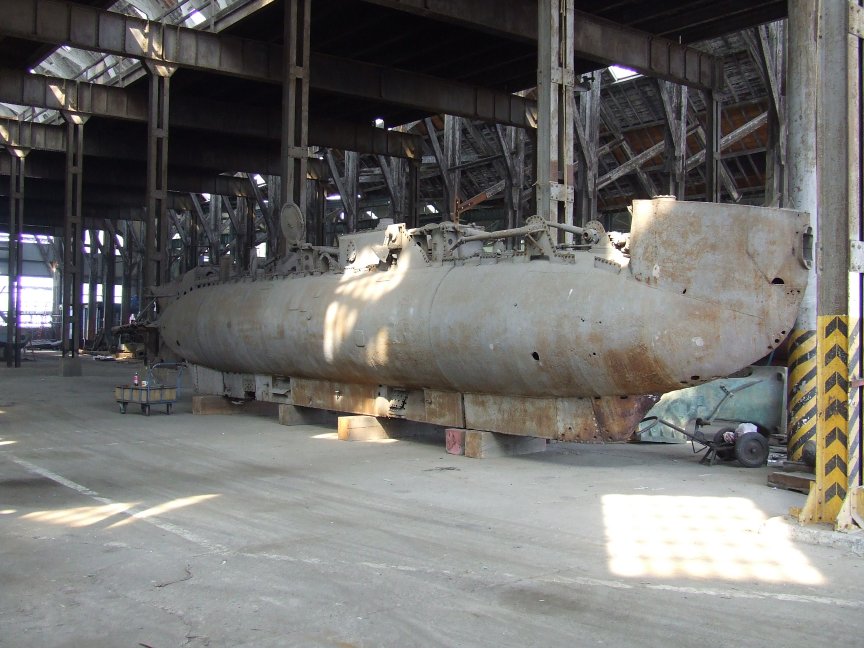
The Sub was later taken to Duxford Airdrome, an annexe of the Imperial War Museum in Hert- fordshire where, under the care of Dr. C.J. Roads. Deputy Director, it was cleaned and refurbished over the next few years by skilled technicians. I never did get to see the sub again, even though I lived just a few kilometres away for a while just south of Cambridge! My admiration and thanks go out to the divers and members of the British Sub Aqua Clubs of:-
Islington Branch, Chelsea Branch, Harlow Branch, Hawker Siddeley Trident Branch, Holborn Branch, llford Branch, Stevenage Branch, Hatfield Polytechnic Branch, Rayleigh Branch, and many others individual divers of the British Sub Aqua Club who worked so hard throughout the project.
Below is the film that the team shot. it was on 8mm cine film,(remember that?) and was later transferred to DVD. Its a bit wonky in places but well worth looking at as it encapsulates the sheer dedication and ‘press on’ attitude of all those involved. I have split the film into two parts as it was easier to upload. I am grateful to Peter Cornish for the film. Update The XE 8 is now at Chatham Dockyard on permanent loan from The Imperial War Museum.

Derrick Keeping says
Interesting article–A job well done. Had a soft spot for those little boats since ’58 when the Shrimp was in the same basin as us in Portsmouth.
mark jarvis says
This was my dads sub’ ! Ivor Jarvis ( now aged 86) still going strong !
He is off to see soon after 66 years !!
Cheers Mark Jarvis.
07525 424968
David Pitman says
I was the skipper of one of the boat involved in take the diver out at weekend , i have a vido which brian king did .They were, amazingly, ‘encouraged’ to pay their boat hire fees, whether the skipper had managed to get out of the bay or not! Thus, driving down to Weymouth to work on the Submarine often became a very expensive pastime! Only a small percentage of the planned did , Sorry but you are wrong , we got paid for half day full day , the group was call the special projects group which i was a member off, my boat at that time was call Gull Maren
herfordshire says
Had a soft spot for those little boats since ’58 when the Shrimp was in the same basin as us in Portsmouth.Excellent post, very informative. I’m wondering why the opposite experts of this sector don’t understand
this. You should continue your writing. I am confident, you’ve a great readers
’ base already!|What’s Going down i’m new to this, I stumbled upon this I’ve discovered It positively
helpful and it has aided me out loads. I hope to give a contribution & help other users like its aided me.
Good job.
Reply.
Terence Bright says
I remember both XE`s 8 and 9 when serving as a young signalman in HMS Maidstone in 1953. I was much impressed as from the bridge and flagdeck they looked about as big as floating logs when compared with their `big brothers` alongside on the starboard trot!
Karen Dawson says
Peter Cornish was my godfather and this is the first time I’ve seen this and it brought back lovely memories of him